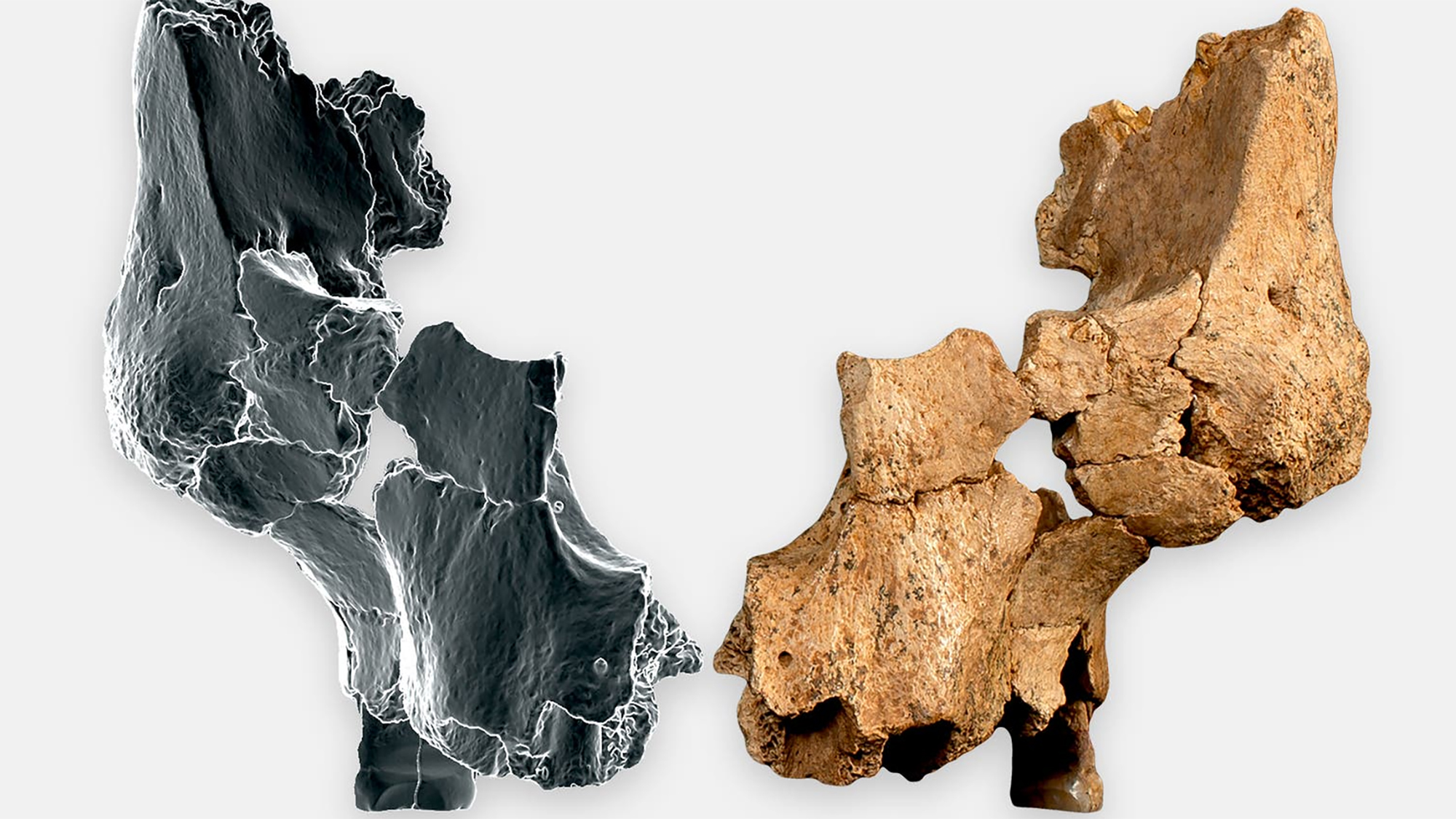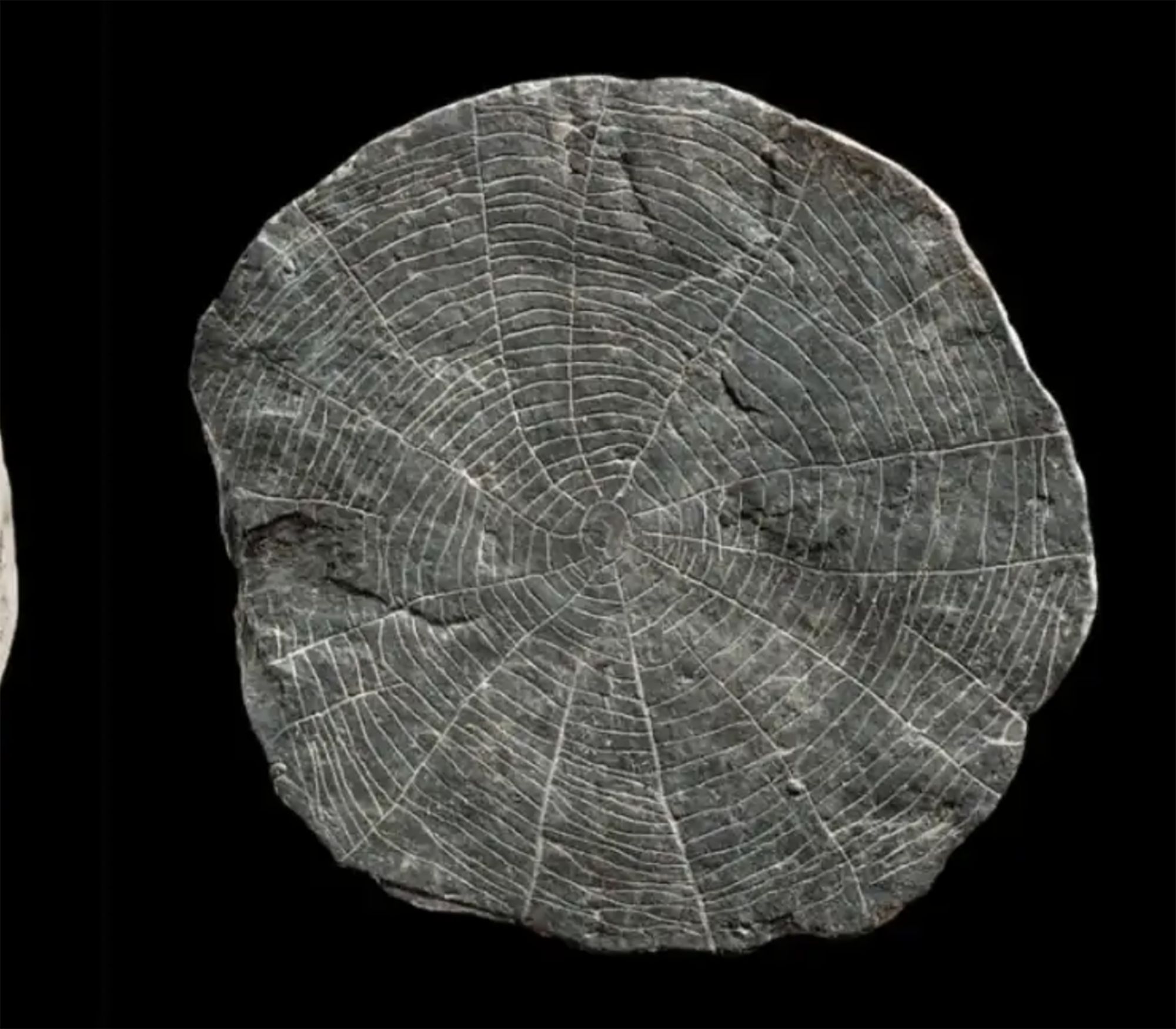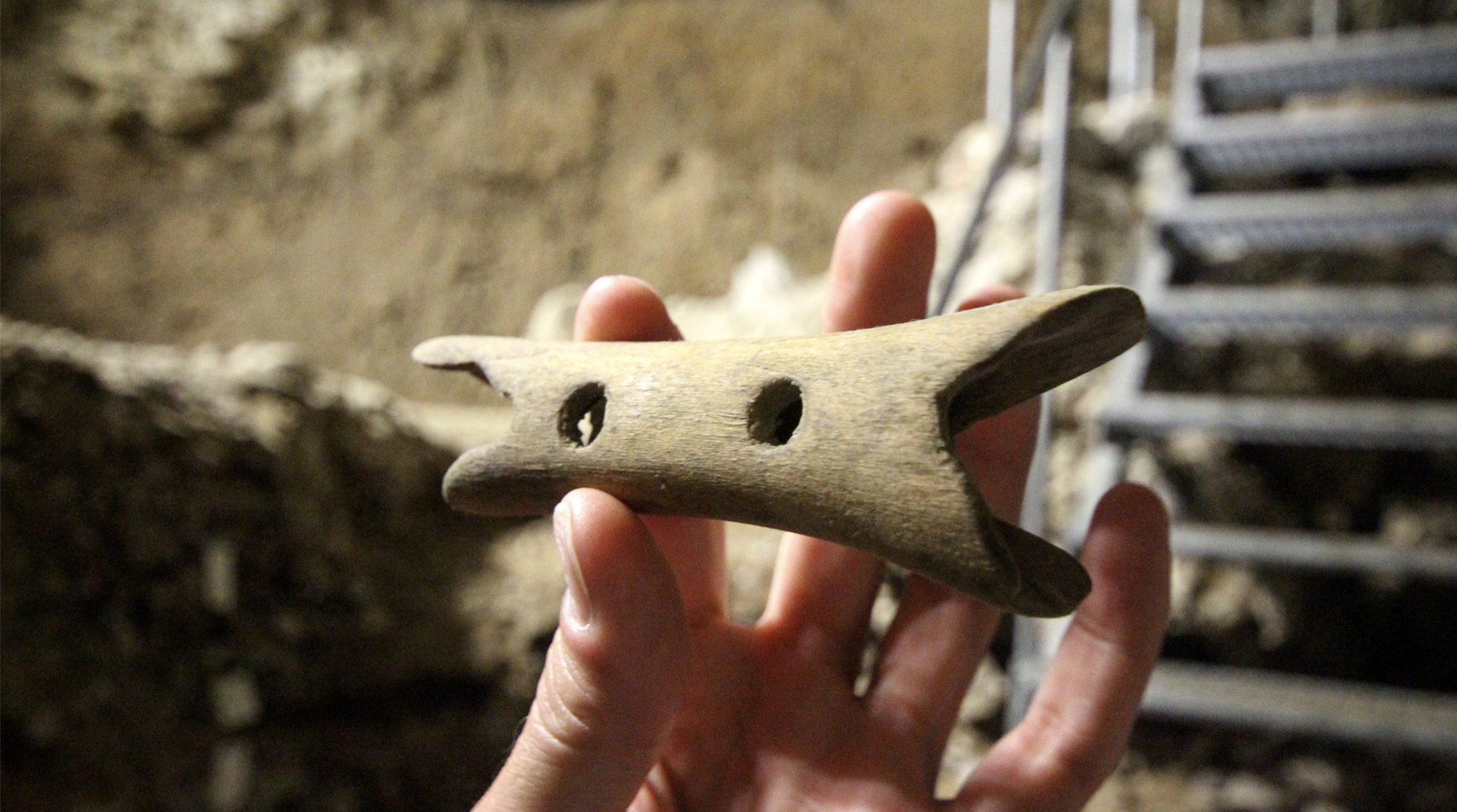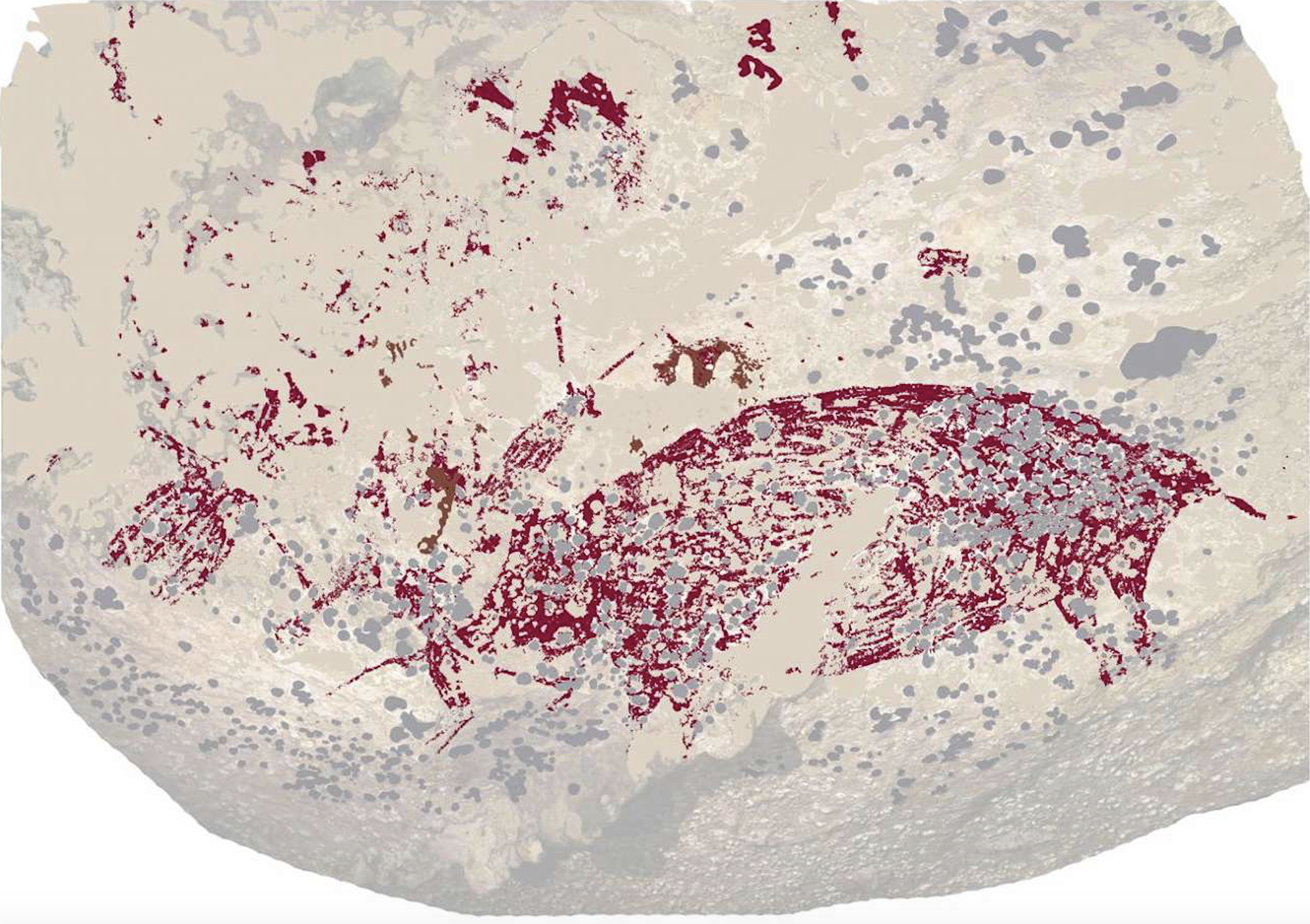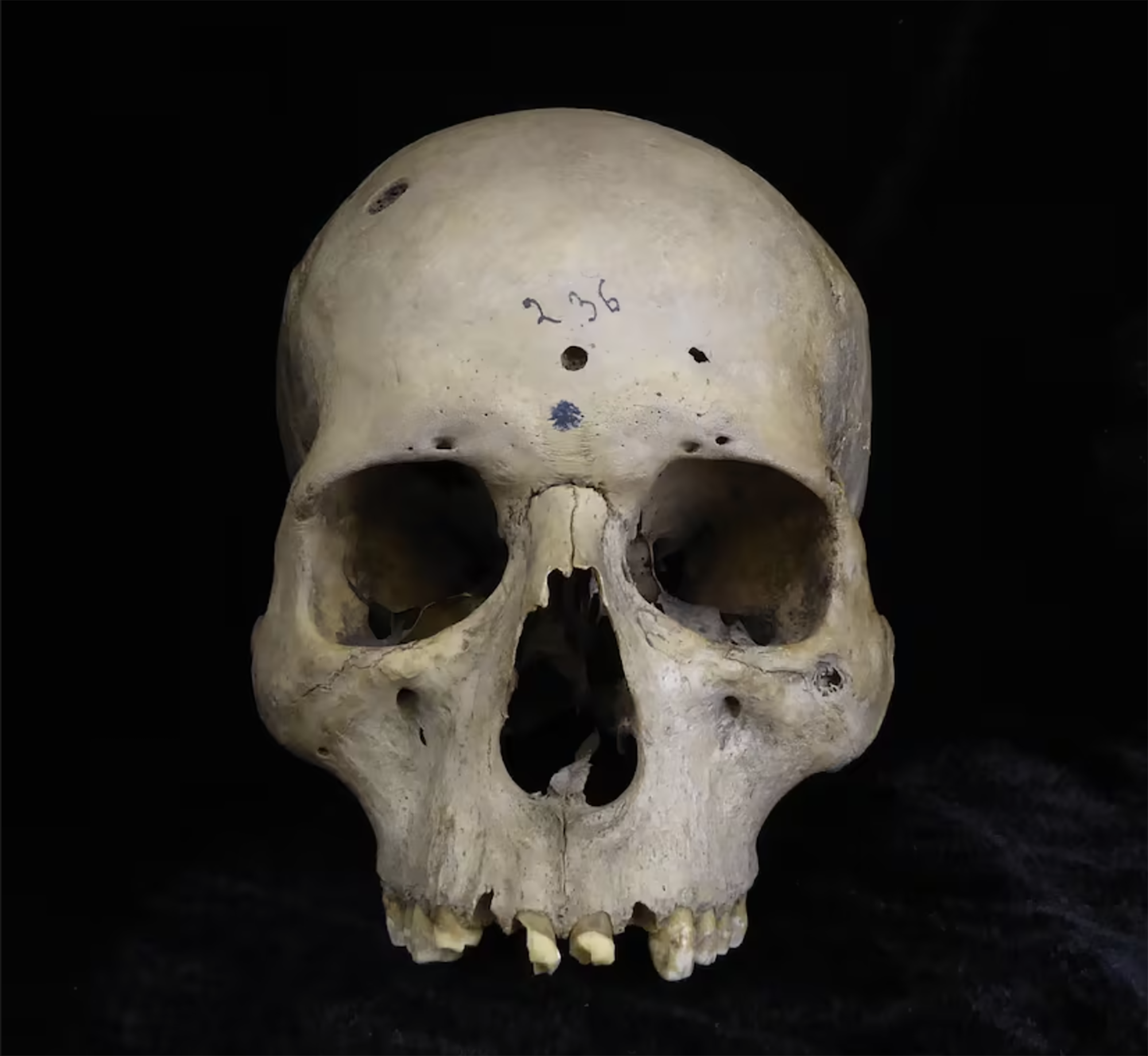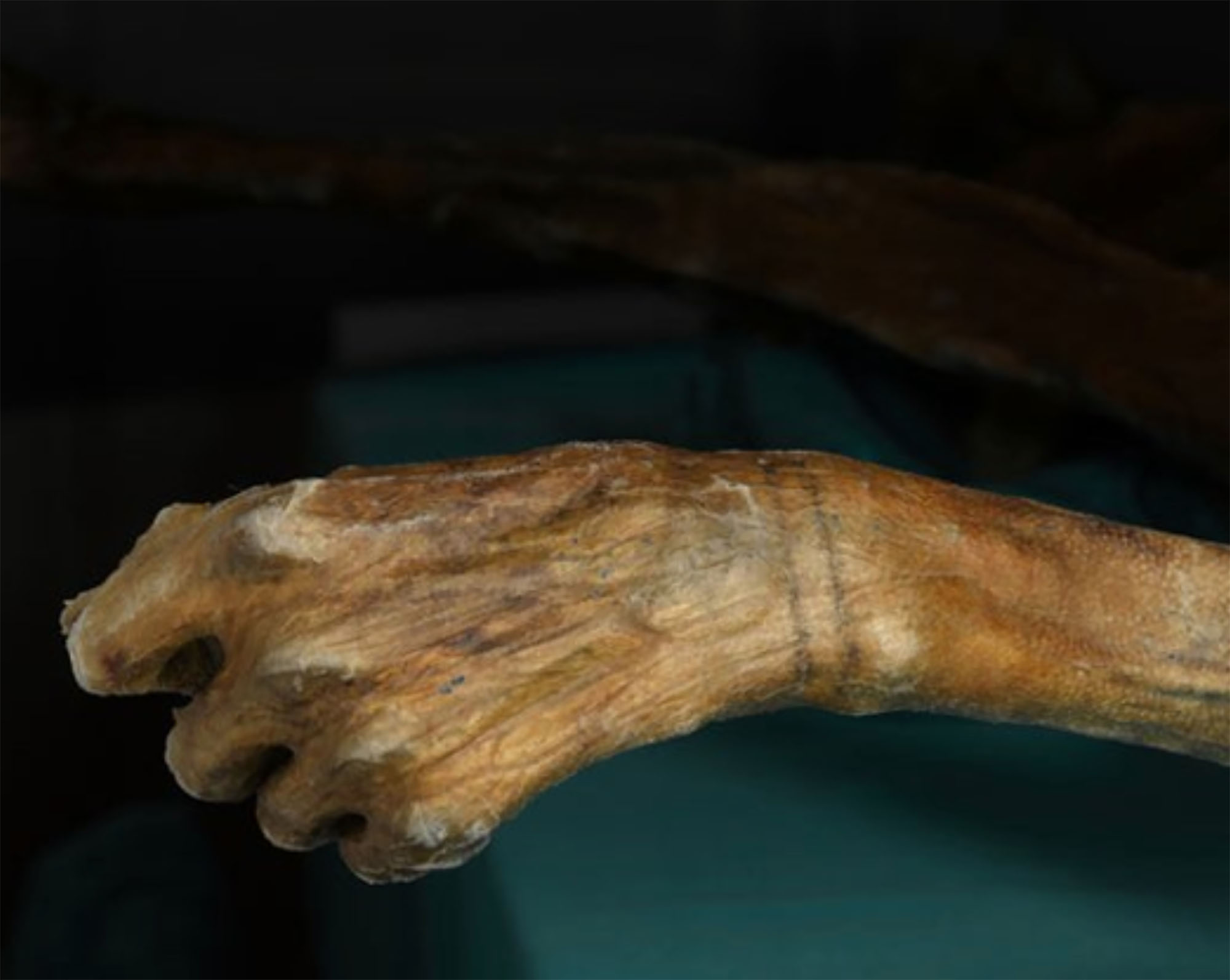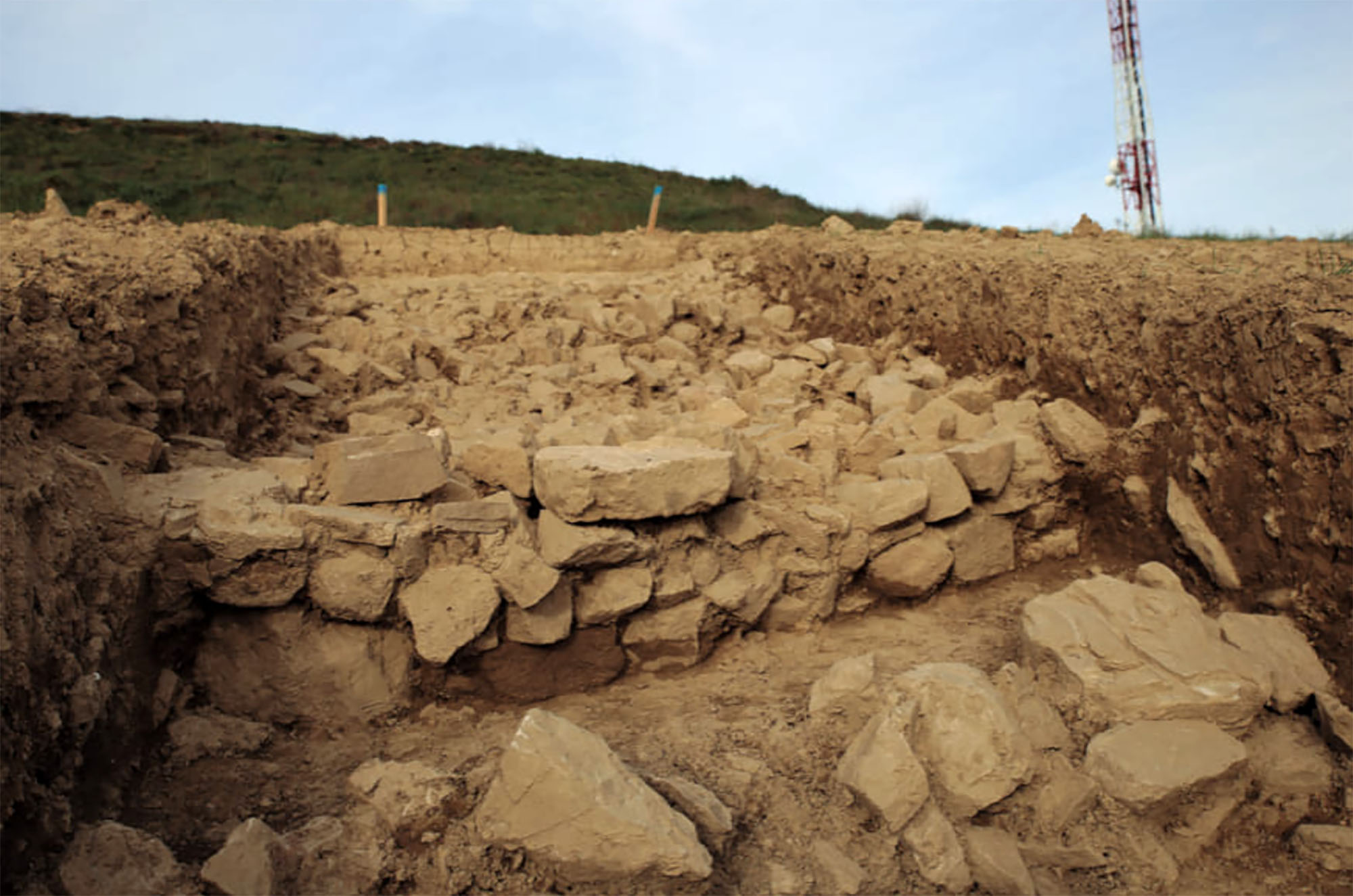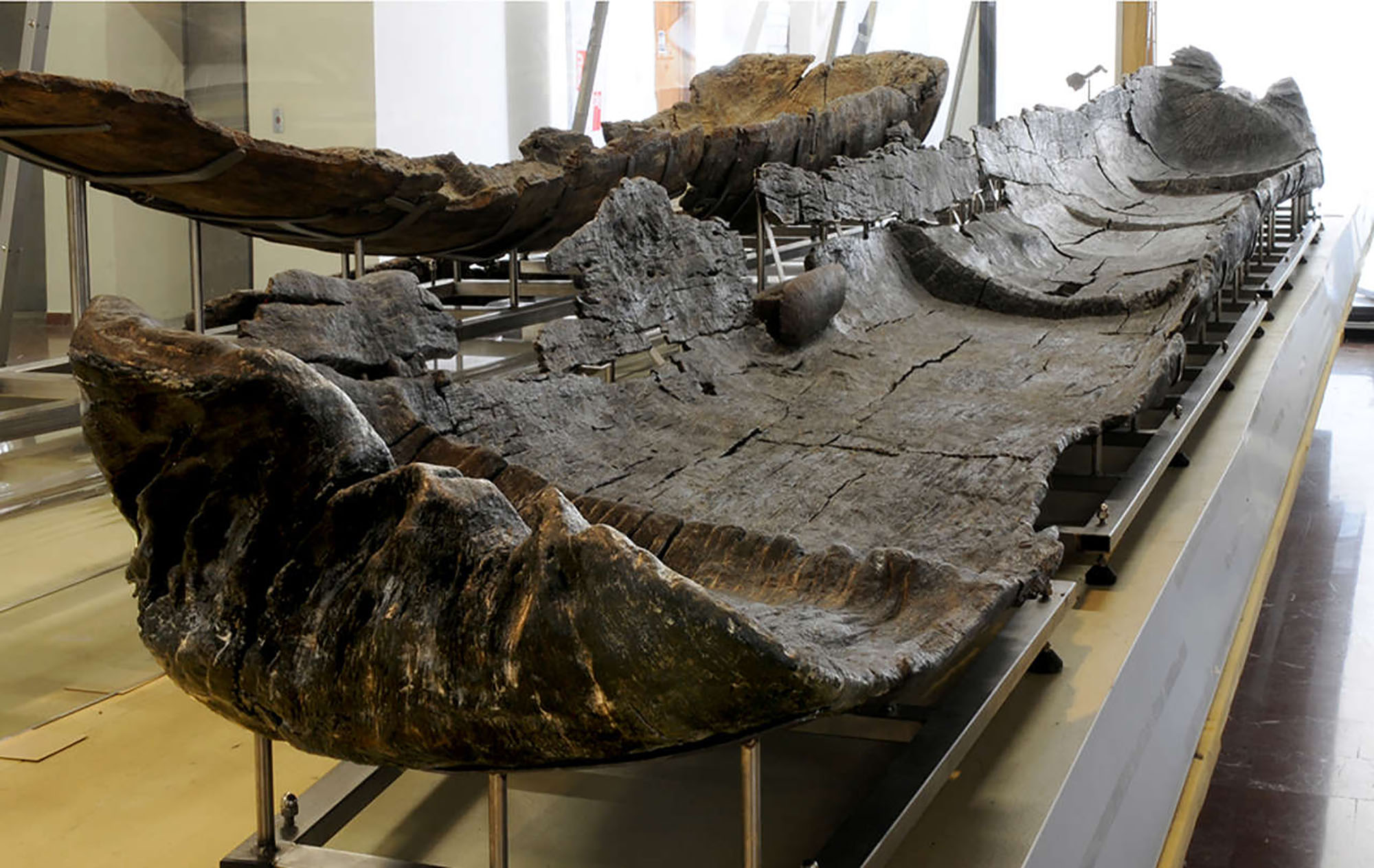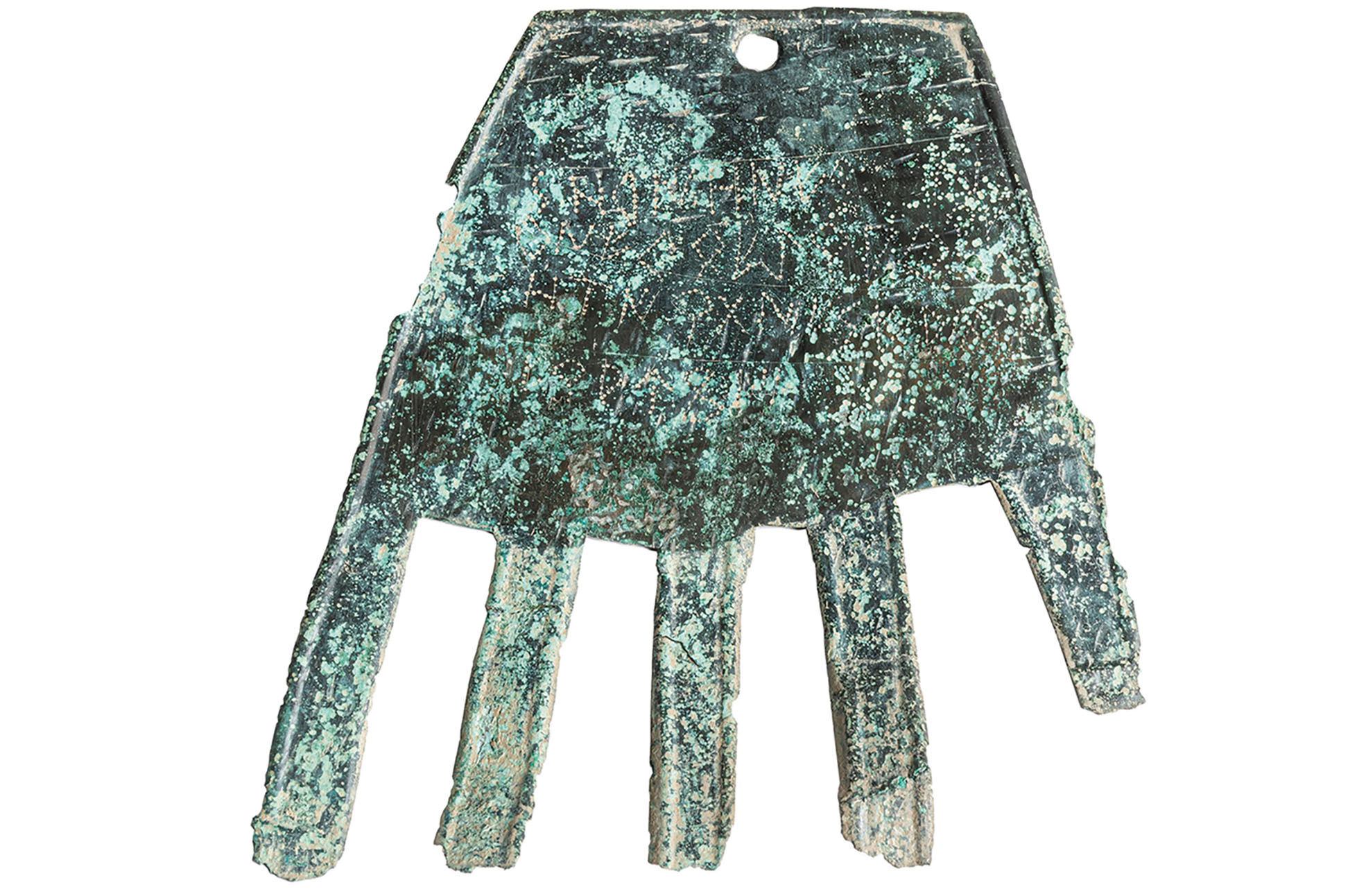"We're rewriting our prehistory."
- In recent times, numerous Paleolithic rock art sites have been discovered and presented. Especially noteworthy have been the findings of the most important deposits of the Armintxe caves of Berriatua and Lekeitio in Bizkaia in 2016. Behind them is the archaeologist Diego Garate.

They say the Paleolithic is fashionable in Bizkaia.
Well, it's the result of ten years of work, and cliffs typically don't make discoveries every year. It has recently been the centenary of Santimamiñe, and only three other caves were found in the following 75 years, but in the last ten years we have heard of a discovery almost every year. Why? Because exploration projects have been launched, because new specialists have appeared and there has been a revolution in technology and technology. The same has happened in Gipuzkoa, where parallel processes have been experienced.
"Only three caves were found in 75 years, but in the last ten years, almost every year, we've been aware of a finding. Why? Because exploration projects have been launched."
Why have we been so many years without knowing that we had much more than Santimamiñe?
In the 20th century, the only researcher was Barandiaran, accompanied by Telesforo Aranzadi, and they did everything. Currently, this scheme organized around a man has changed radically, there are specialists and working groups are created. There are people specialized in very specific issues, like cave art, and resources have improved. Barandiaran used a color flashlight, while today we can illuminate a cave like San Mamés with LED lights and analyze the walls with software.
Is collaboration with speleologists also a new factor?
Yes, ten years ago, we began to conduct a systematic research program of three or four archaeologists, out of work, in our spare time, but immediately we realized that we needed speleologists. In caves, the site is where the light comes in, but sometimes cave art can be found further in and archaeologists usually don't get there, it's the field of speleologists. There have been hardly any contacts in recent decades, but the Provincial Council of Bizkaia organised a meeting for speleologists in 2015. We were archaeologists and paleontologists and gave them the criteria and protocols for locating the fingerprints. The results have not taken long to arrive: In Bizkaia Armintxe, Morgout and Ondaro; in Navarra Alkerdi II; in Gipuzkoa Aitzbitarte…
In Basque Country, there was a vacuum.
Yes, amidst three important points identified; France-Cantabria, Pyrenees and Perigord. There could not fail to be a relationship between them, since the only step is the Irun area. Therefore, there was a debate to explain the “Basque emptiness”: why so few deposits? Our hypothesis was that the research work had been done little and from there we started looking for it. Today, this void has been filled to a large extent, we already have 34 caves decorated in Euskal Herria. There was an image that there were few deposits, and now we're rewriting our prehistory.

Were we like the Paleolithic?
Yes, physically like us, but very skilled and hard, today in your condition we would not last a week. The European Aborigines were the Neanderthals, and our ancestors arrived 40,000 years ago, following the same path as the current refugees. The Neanderthals left the territory. Then art began.
Art, what did they do it for?
There is a theory of sympathetic magic, so that the image becomes a reality, but the truth is that we will never know the exact meaning of cave art... Their mentality and their symbolic world are a matter of 20,000 years ago. The life of hunter-gatherers that we can find today in the Amazon, yes, but the symbolic world would be very different. Different types of art can be distinguished: at the entrance of the cave is a public art for the whole group, but in Atxurra, for example, in Berriatua, access to the site is very difficult and dangerous. Three people came in, they did the work of art, and maybe they never returned, leaving chunks of coal.
Some of the lost remains are also documented.
In Mañaria the cave of Atxuri was occupied by the quarry. In the cave of Aitzbitarte IV, the speleologists told us that the City Hall had cleaned the walls with hoses. To know what was there. The bison of Aitzbitarte V, which I saw on the great route, is a cave plagued with graffiti.
Contemporary and older graffiti...
Yes, war carlists have been found in Atxurra and Lumentxa, and in the cave of Abittaga, in Amoroto, members of the speleological group of Gernika ADES found the refuge of weapons of the late 19th century. Apparently, one of Lekeitio’s neighbours wanted to organize the third Carlist war in which his weapons were found, according to the same sources. Atxurra is full of graffiti and we've found some destroyed bison under the spray paints. Fortunately, most of the works of the Paleolithic are above, over some cornices.
And new remains will also appear in some places.
Yes, for example, in the cave of Eguzkiola, in Zeanuri, ETA had kidnapped a man, and in the excavations, in the first layer, the traces of it are visible, as the fabric casets and the land of preparation moved. Many remains of the civil war have been found in a lower layer and, further down, prehistoric corpses. There were traces of almost all of our history, only those of the time of the warfare were missing.
“Arkeologia beti interesatu zait, Deustun karrera egin ondoren labar artean berezitu eta Arenazan hasi nintzen ikertzen, eta hortik aurrera besteak etorri dira. 2011n Askondokoa aurkitu genuenean uste genuen helduak ginela arkeologo batek amestu dezakeen gorenera, lo egin ezinik egoten nintzen, pentsa, arkeologo gehienek ez dute inoiz aztarnategirik aurkitzen beren bizitzan. Gero dinamika horretan jarraitu dut, etorriko zena jakin gabe. Aurkikuntza bakoitzarekin adrenalina igoera izugarria da. Atxurran itzela izan zen: hemen bisonteak, hemen zaldiak… Pentsatzen duzu: hau ez du inork ikusi 20.000 urtean eta hemen gaude gu orain”.
Atapuercako aztarnategian hominido zahar baten aurpegi-hezur zatiak aurkitu dituzte. Homo affinis erectus bezala sailkatu dute giza-espezieen artean, eta gure arbasoek Afrikatik kanpora egindako lehen migrazioei buruzko teoriak irauli ditzake, adituen arabera.
In the Maszycka cave in Poland, remains of 18,000 years ago were found at the end of the 19th century. But recently, human bones have been studied using new technologies and found clear signs of cannibalism.
This is not the first time that a study has reached this conclusion,... [+]
Archaeologists have discovered more than 600 engraved stones at the Vasagård site in Denmark. According to the results of the data, dating back to 4,900 years ago, it is also known that a violent eruption of a volcano occurred in Alaska at that time. The effects of this... [+]
Ethiopia, 24 November 1974. Lucy's skeleton was found in Hadar, one of the oldest traces of human ancestors. The Australian hominid of Australopithecus afarensis is between 3.2 and 3.5 million years old.
So they considered it the ancestor of species, the mother of all of us. In... [+]
A group of archaeologists from the University of Berkeley, California, USA. That is, men didn't launch the lances to hunt mammoths and other great mammals. That was the most widespread hypothesis so far, the technique we've seen in movies, video games ...
But the study, published... [+]
Geissenkloesterle (Germany), 42,000 years ago. Those living in the cave of the Danube basin made a flute with bird bones and mammoth ivory. At the same time, the inhabitants of the cave of Divje Babe in Slovenia also made a flute with the femur of a bear. These are the oldest... [+]
In the south of the Indonesian island of Sulawesi, in the cave of Leang Karampuang, archaeologists from the Griffith and Southern Cross universities and the Indonesian National Agency have discovered a painting of three anthropomorphic figures and a boar. According to the study... [+]
Two years ago, the Catalan archaeologist Edgard Camarós, two human skulls and Cancer? He found a motif card inside a cardboard box at Cambridge University. Skulls were coming from Giga, from Egypt, and he recently published in the journal Frontiers in Medicine, his team has... [+]
Since they discovered the corpse of Ötzi in the Alps in 1991, the 5,000 years preserved in very good condition have been used for numerous investigations. From the beginning, the 61 tattoos he had on his skin were the ones that cared for him. Experts believed these tattoos were... [+]
Between 1992 and 2006, in the waters of Lake Bracciano of Rome, the site of La Marmotta del Neolitico was excavated early. They recently published in Plos One magazine a study on the five piraguas found there. It is estimated that the boats are between 7,000-7,500 years... [+]
In the Gulf of Mecklenburg, in Baltic waters, archaeologists identified in 2021 a stone structure of almost a kilometre. Now a team of interdisciplinary researchers has published a study on the wall in the journal PNAS.
The structure is about 10,000 years old and has come to... [+]











